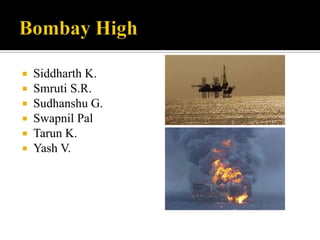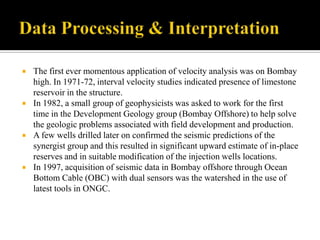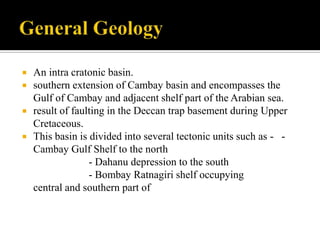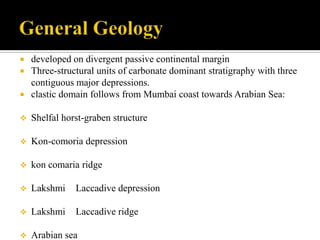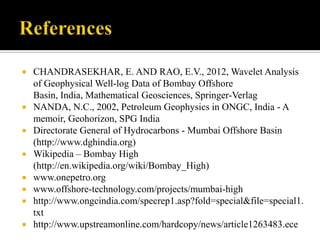The document discusses the Bombay High oilfield located offshore of Mumbai, India in the Arabian Sea. It describes how the oilfield was discovered in 1964-1967 by a joint Russian-Indian exploration team mapping the area. The Bombay High field supplied 14% of India's oil needs and accounted for 38% of domestic production, with operations run by India's Oil and Natural Gas Corporation (ONGC) exploiting reservoirs ranging from fractured basement to middle Miocene carbonates.
